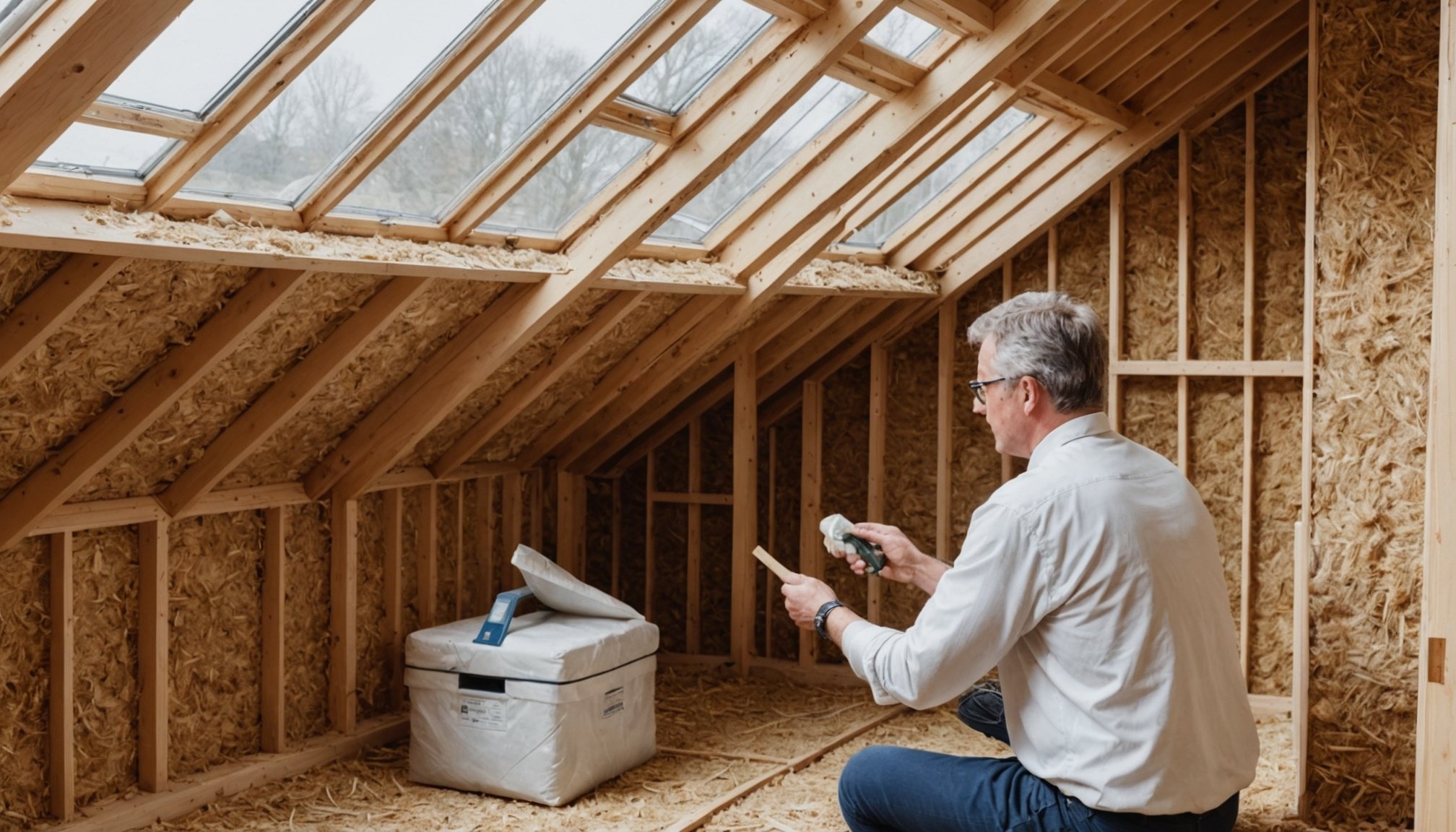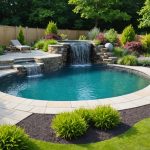Overview of Eco-Friendly Home Insulation
Eco-friendly insulation is an essential component in modern homes aiming for sustainability and energy efficiency. It reduces energy consumption and lowers carbon footprints, which is crucial in the fight against climate change. This type of insulation utilises sustainable insulation materials rather than conventional options, prioritising environmental responsibility without sacrificing functionality.
In the UK, several sustainable insulation materials are prominently used to achieve these goals. Among the most popular are sheep wool, cellulose, and hemp. Sheep wool insulation is naturally durable and highly effective in regulating temperatures due to its inherent moisture-wicking properties. Cellulose, often made from recycled paper, offers excellent thermal performance and soundproofing abilities. Hemp, a fast-growing plant, provides natural insulation with a low environmental impact and has unique thermal and anti-microbial benefits.
Avez-vous vu cela : Top Soundproofing Tips for Peaceful Living in UK Cities: Your Guide to Urban Serenity
The benefits of incorporating these eco-friendly materials are manifold. They not only reduce heat loss, thereby enhancing energy efficiency of homes, but also contribute to healthier indoor environments. Moreover, using these materials supports a sustainable economy by reducing reliance on fossil fuels and promoting the use of renewable resources. Thus, eco-friendly insulation is a prudent choice for environmentally-conscious homeowners seeking to improve their property’s insulation efficiency.
Types of Sustainable Insulation Materials
Exploring sustainable insulation options is crucial for environmentally-conscious homeowners. Various natural insulation materials not only improve energy efficiency but also reduce ecological footprints. Below, we delve into some popular types, shedding light on their unique properties and benefits.
A lire également : Discover the Best Color Schemes for a Warm and Inviting Cottage Living Room in the UK
Sheep’s Wool Insulation
Sheep’s wool, a prominent organic insulation, offers excellent thermal performance. This material is naturally moisture-resistant, making it ideal for diverse climates. Wool insulation is easy to install as it can fit snugly into irregular spaces without the need for specialised equipment. Its fire-resistant properties provide an added safety layer for your home.
Cellulose Insulation
Derived primarily from recycled insulation processes, cellulose consists of shredded newsprint or cardboard, demonstrating efficient energy retention. Its eco-friendliness stems from its high-recycled content, significantly reducing landfill waste. Installation involves blowing loose-fill cellulose into wall cavities, providing a snug fit that minimises air leakage.
Hemp Insulation
Hemp, a versatile natural insulation material, is appreciated for its durability and sustainability in the UK. It provides efficient thermal and acoustic insulation. Sourced from hemp plants, it’s a low-impact, rapidly renewable resource. Typically cut into batts or boards, hemp insulation is straightforward to install, offering excellent breathability and resistance to pests.
Comparison of Insulation Materials
Choosing the right insulation material involves considering a variety of factors. Let’s explore some important metrics and options to look for in an insulation material comparison. Key performance metrics include R-value, which measures thermal resistance, moisture resistance for longevity, and acoustic properties for noise reduction. A higher R-value signifies better thermal performance. Comparing these metrics helps determine the best insulation type for specific needs.
When evaluating eco-friendly insulation options, consider the environmental impact during both manufacturing and disposal. Some materials, like cellulose, are made from recycled content, while others, such as fiberglass, have a more intensive manufacturing process. The disposal of non-biodegradable materials can also harm the environment, making biodegradable options attractive for those prioritizing sustainability.
Cost is another essential factor in an insulation material comparison. While some materials may have a lower initial cost, their longevity and durability may differ. For instance, spray foam offers excellent insulation but can be more expensive initially compared to fiberglass. Conversely, it may provide long-term savings due to its durability and efficiency.
Understanding these factors helps in selecting an insulation material that balances thermal performance, environmental impact, and cost.
Installation Methods and Considerations
In the realm of home insulation installation, one often encounters the decision between DIY insulation techniques and hiring professional services. By starting with DIY projects, homeowners can engage with accessible, eco-friendly options, fostering both learning and cost-effectiveness.
DIY Insulation Projects
For those considering DIY insulation techniques, start with accessible materials like spray foam or fibreglass batts. These options allow individuals to improve energy efficiency without major outlays. Ensure proper safety practices, such as wearing gloves and masks, to tackle small projects yourself. Basic eco-friendly methods like using recycled cellulose not only benefit the environment but also provide effective coverage.
Hiring Professional Insulation Services
Conversely, hiring professional insulation services brings expertise and efficiency to larger tasks. Professionals have the tools and knowledge to deal with complex areas such as attics and basements, where precision matters. When choosing professionals, consider their experience, previous customer reviews, and whether they adhere to safety and compliance standards.
Safety and Compliance
Regardless of the chosen path, safety and compliance with regulations is paramount. Both DIY enthusiasts and professionals need to be aware of air quality regulations and fire safety codes. Always check that materials used are compliant with local regulations to ensure a safe and long-lasting installation, enhancing the overall comfort and energy efficiency of your home.
Government Regulations and Incentives
The UK prioritises eco-friendly home improvements, implementing regulations and offering incentives to encourage sustainable homes. Central to these initiatives are the stipulations on insulation materials. Current regulations demand that homeowners use approved, eco-friendly materials that minimise environmental impact. These regulations ensure that all insulation materials meet specific thermal and efficiency standards, thus enhancing energy conservation in homes.
In support of these efforts, the UK government provides substantial eco-home grants and incentives for homeowners. These grants aim to alleviate the financial burden associated with sustainable upgrades, such as the installation of eco-friendly insulation. Available programs, like the Green Homes Grant, extend vouchers to eligible households, helping cover the costs of installation and materials.
Applying for these grant opportunities is crucial but requires understanding the procedure. Typically, homeowners must demonstrate eligibility, focusing on income levels or existing heating systems, to qualify for financial assistance. The process involves researching available grants, completing application forms, and sometimes providing supporting documents. By navigating this process diligently, homeowners can benefit significantly from these insulation regulations and incentives, making environmentally-conscious home upgrades more accessible and feasible. The combined effect of regulatory demands and financial support is pivotal in promoting sustainable living in the UK.
Practical Tips for Homeowners
When considering home insulation tips for improving energy efficiency, the first step is assessing current insulation. This involves checking the R-value, which reflects thermal resistance. Ensure insulation is evenly distributed in all areas, like attics and wall cavities. Use thermal cameras to identify cold spots for a comprehensive evaluation.
Maximizing Efficiency Post-Installation
Once your insulation is in place, there are several strategies to enhance energy efficiency. Seal any gaps around windows and doors using weatherstripping or caulk. Install energy-efficient windows to minimize heat loss further. Ventilation systems should also be inspected to ensure they are not disrupting your insulation’s effectiveness.
Homeowner Maintenance
Regular maintenance is crucial for eco-friendly practices and long-lasting insulation performance. Check for moisture accumulation, as it can significantly reduce insulation effectiveness. Clean and maintain gutters to prevent water seepage into insulated areas. Additionally, schedule annual professional inspections to keep your home insulation in optimal condition.
By implementing these straightforward steps and ongoing practices, homeowners can achieve and maintain high energy efficiency levels. Additionally, these measures contribute to more sustainable, eco-friendly living by reducing energy consumption and costs. Remember, proper assessment and maintenance of your home’s insulation are pivotal to maximizing both its effectiveness and your comfort.











